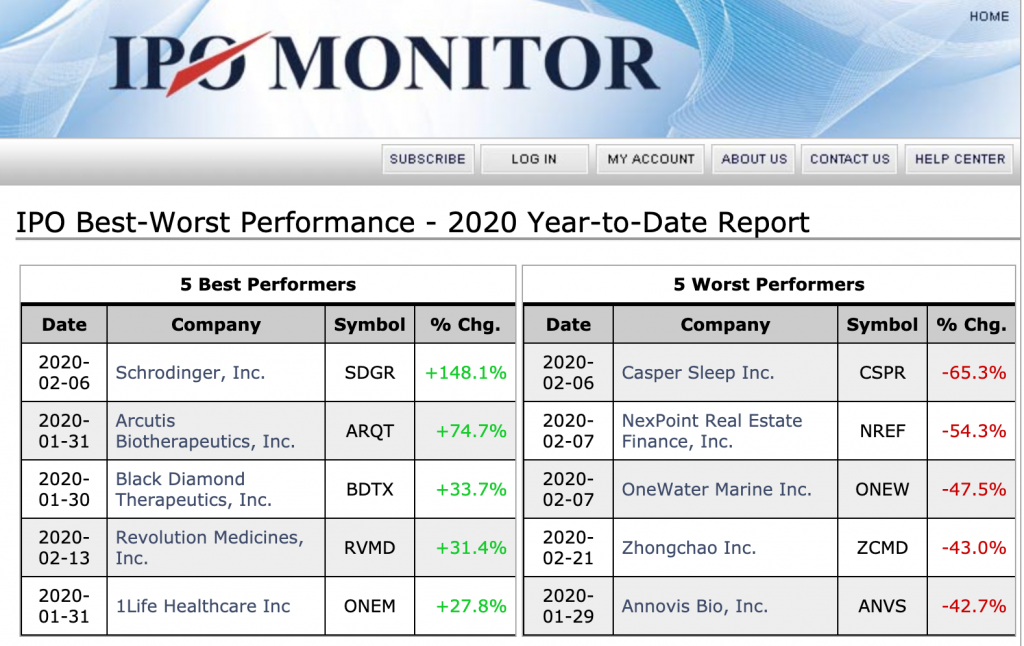Comparing the business language of successful and failed IPOs

An IPO is not only an exciting, frothy affair with banks, bells and load of news coverage, but it also constitutes for many firms, the making and breaking of dreams and fortunes – as they effectively take the proverbial leap into the financial unknown – and into the waiting jaws of bankers, traders and moneymen across the globe.
So wouldn’t it be wonderful if we could accurately predict the fate of these brave men and women before they take the plunge…?
[Initial Public Offering (IPO) – noun: initial public offering; plural noun: initial public offerings; an act of offering the stock of a company on a public stock exchange for the first time.]
For us non-financial literate yobs, an IPO put simply is where a company goes from being private to one that issues stocks and shares that can be publicly or freely bought and sold.
Now you may be thinking, ‘I like this guy, very nice face, but from what I remember he is a language chap – why is he harping on about IPOs? Well intrepid reader, I am interested in the language of IPOs and the tantalising prospect of its use in predicting outcomes!
Enter the S-1 filing – ‘what is one of those Jim, I hear you hollering‘, well before a company can go ahead with an IPO they must complete an S-1 filing, it’s a kind of prospectus which covers every inch of a company’s history, their products, their financials – the whole shooting match.
One area of this document is simply called “Business” within which the company outlines in open text, what it does, and what it stands for – and this is what I analysed – five of the worst performing IPOs of 2020 so far, compared with five of the best, with the information on this taken from IPOmonitor.com.
Using Relative Insight’s unique text analysis technology, I looked at how the language footprint of these S-1 documents compared – excluding of course any technical language that would obviously be specific to each individual business.
I analysed some 13,742 words and here’s what I found:
Language of the best performers:
Cash and Figures (5.4x)
Companies in the best performing IPOs used language around money and finances 5.4 times more often than the worst performing companies, and these tend to be in two settings. Firstly, reporting on plans and achievements to date and secondly, referring to the market in which they operate.
Importance & Focus (2.8x)
Words like significant, fundamental, priority and important make up this topic, and the best performers constantly refer to what counts the most to their business and its continued success.
“In order to capitalize on our opportunity, we have assembled a management team with deep development, formulation and commercialization expertise for dermatology products. Our management team has held key roles in numerous biotechnology and pharmaceutical companies”
Language of the worst performers
Non-specific size boasting (5.2x)
A wordy title, but effectively it means that the companies who did less well in their IPO tended to use general statements about their organisational size, and their market size which perhaps hid their potential. More successful claims use words like largest and enormous, so not only are they non-specific, it seems they are superlative.
“We are just taking off. Our business model not only enables us to achieve strong performance, but also places us in a unique position to capture the enormous potential of China’s residential rental market.”
Our, We and Us (1.5x)
Many companies pride themselves on building culture and a sense of identity, but unexpectedly the use of plural first person pronouns is more prevalent in poor performing IPOs.
Interestingly, we can see an absolute pattern emerging in the language used by the best performers compared to the worst – and the trend that really sings from the page is the use of stats, numbers and financial terms, and there is a clear and distinct difference.
I wonder whether my research could be used to predict the outcomes of IPOs taking the power away from the trading floor and into the clammy hands of language nerds at Relative Insight – I suggest further research is needed!
We’ve analysed millions of conversations about Coronavirus for our clients and we know, only too well, about the sheer volume of COVID-19 content that’s out there.
Recognising this, we want to contribute to the conversation by publishing something useful – a weekly comparative analysis timeline looking back over the last seven days of activity.

